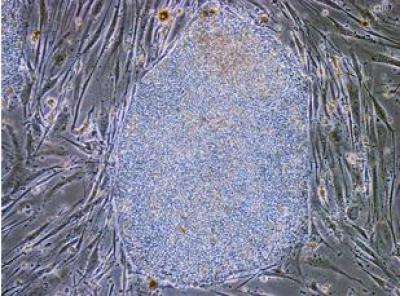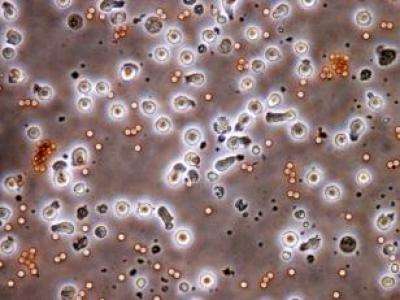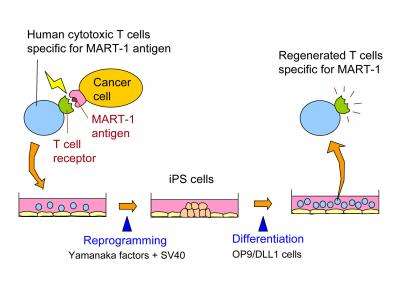Revolutionary techniques could help harness patients' own immune cells to fight disease

The human body contains immune cells programmed to fight cancer and viral infections, but they often have short lifespans and are not numerous enough to overcome attacks by particularly aggressive malignancies or invasions.
Now researchers reporting in two separate papers in the January 4th issue of the Cell Press journal Cell Stem Cell used stem cell technology to successfully regenerate patients' immune cells, creating large numbers that were long-lived and could recognize their specified targets: HIV-infected cells in one case and cancer cells in the other. The findings could help in the development of strategies to rejuvenate patients' exhausted immune responses.
The techniques the groups employed involved using known factors to revert mature immune T cells into induced pluripotent stem cells (iPSCs), which can differentiate into virtually any of the body's different cell types. The researchers then expanded these iPSCs and later coaxed them to redifferentiate back into T cells. Importantly, the newly made T cells were "rejuvenated" with increased growth potential and lifespan, while retaining their original ability to target cancer and HIV-infected cells. These findings suggest that manipulating T cells using iPSC techniques could be useful for future development of more effective immune therapies.

In one study, investigators used T cells from an HIV-infected patient. The redifferentiated cells they generated had an unlimited lifespan and contained long telomeres, or caps, on the ends of their chromosomes, which protect cells from aging. This is significant because normal aging of T cells limits their expansion, making them inefficient as therapies. "The system we established provides 'young and active' T cells for adoptive immunotherapy against viral infection or cancers," says senior author Dr. Hiromitsu Nakauchi, of the University of Tokyo.

The other research team focused on T cells from a patient with malignant melanoma. The redifferentiated cells they created recognized the protein MART-1, which is commonly expressed on melanoma tumors. "The next step we are going to do is examine whether these regenerated T cells can selectively kill tumor cells but not other healthy tissues. If such cells are developed, these cells might be directly applied to patients," says senior author Dr. Hiroshi Kawamoto, of the RIKEN Research Center for Allergy and Immunology. "This could be realized in the not-so-distant future."
More information: Nishimura et al.: "Generation of rejuvenated antigen-specific T cells by pluripotency reprogramming and redifferentiation." dx.doi.org/10.1016/j.stem.2012.11.002
Vizcardo et al.: "Regeneration of human tumor antigen-specific T cells from iPS cells derived from mature CD8+ T cells." dx.doi.org/10.1016/j.stem.2012.12.006

















